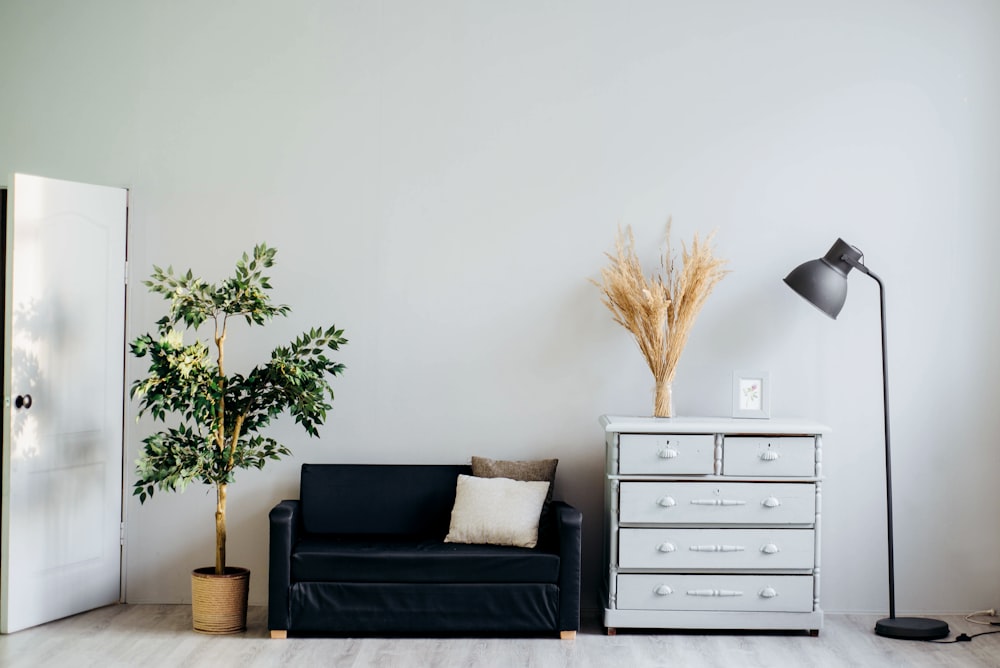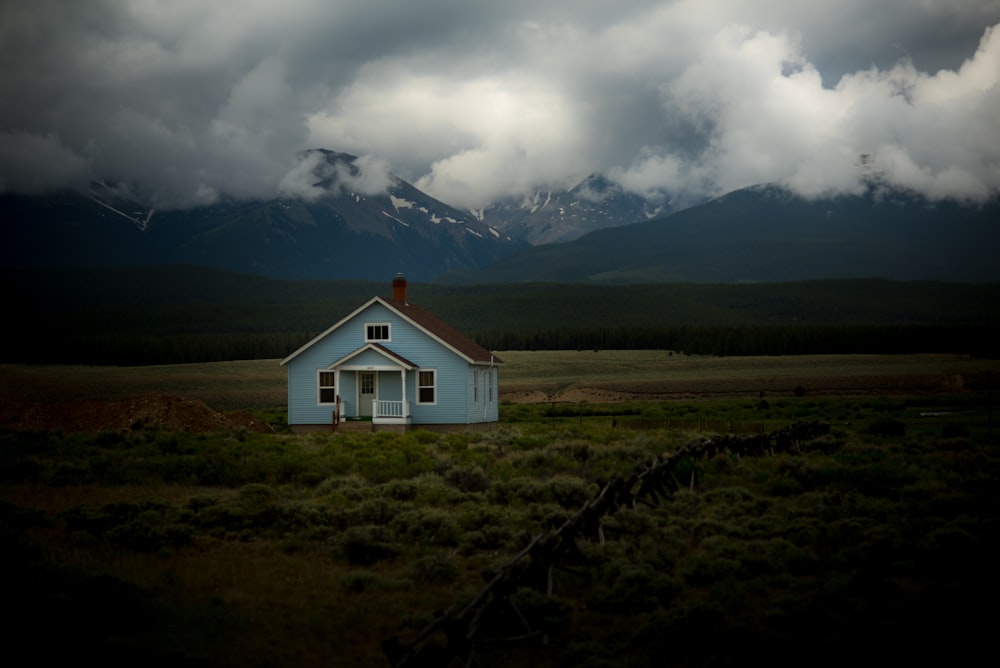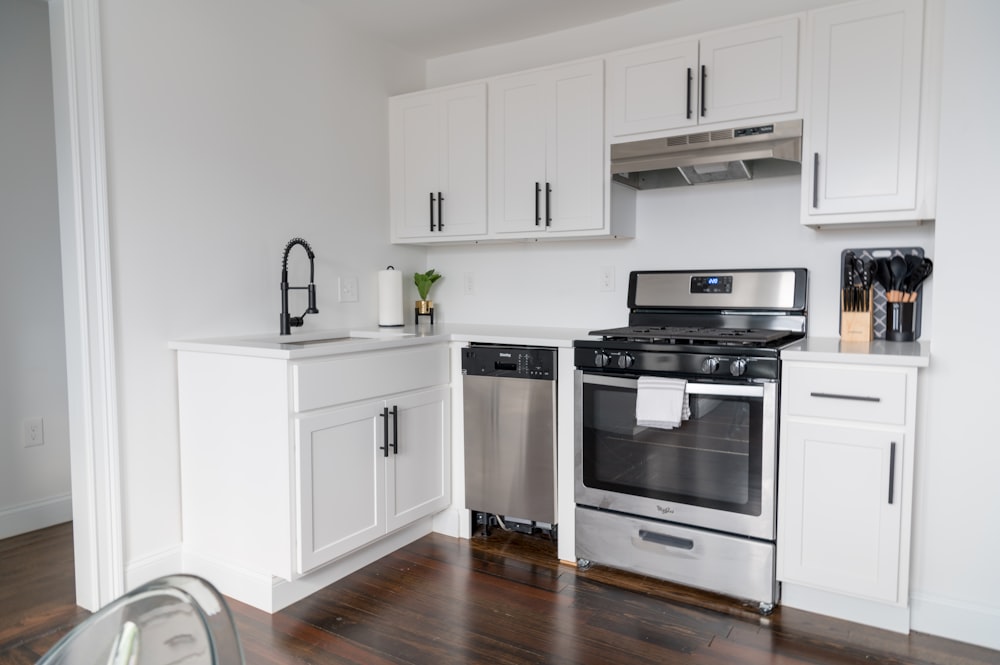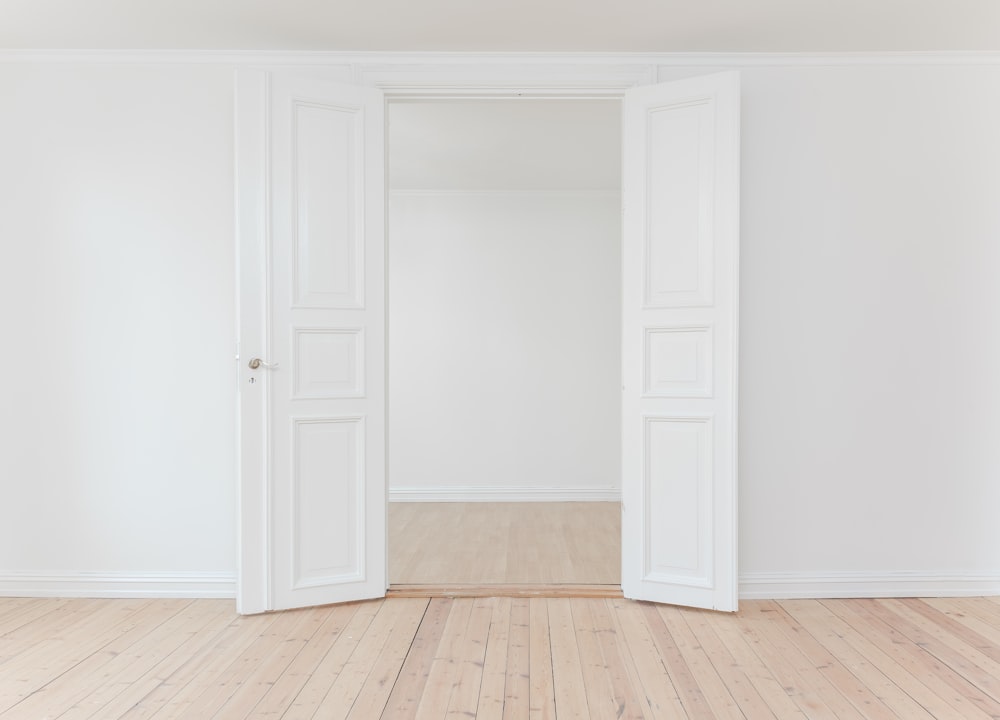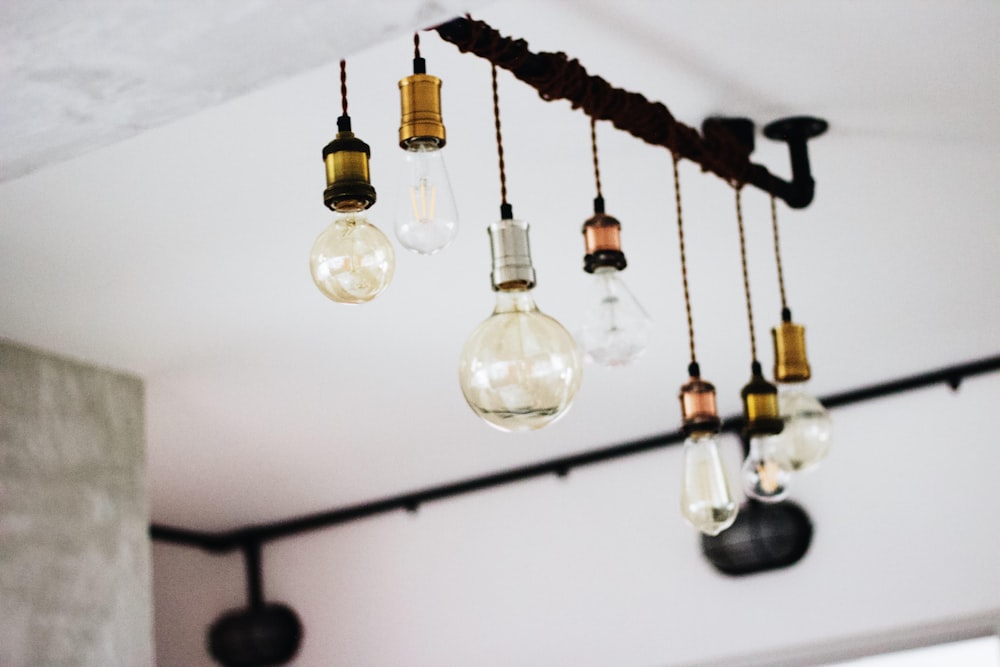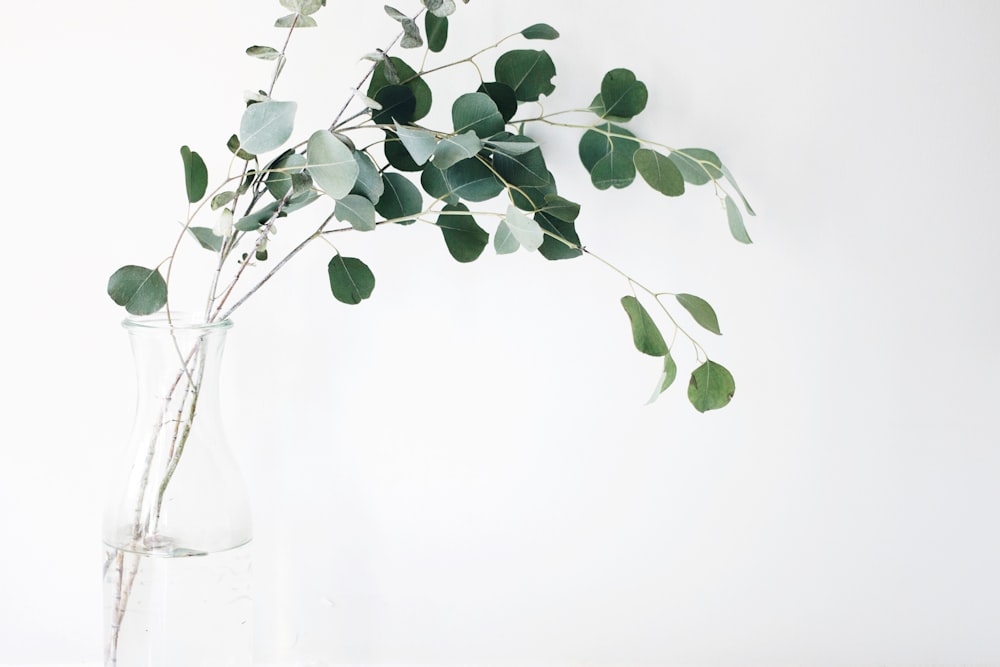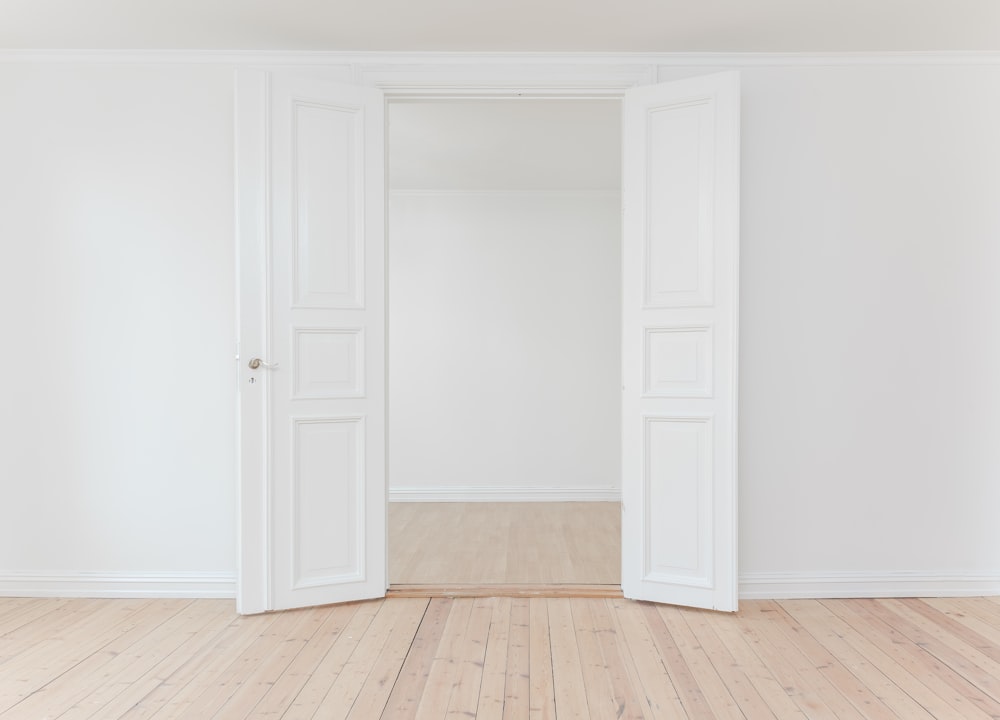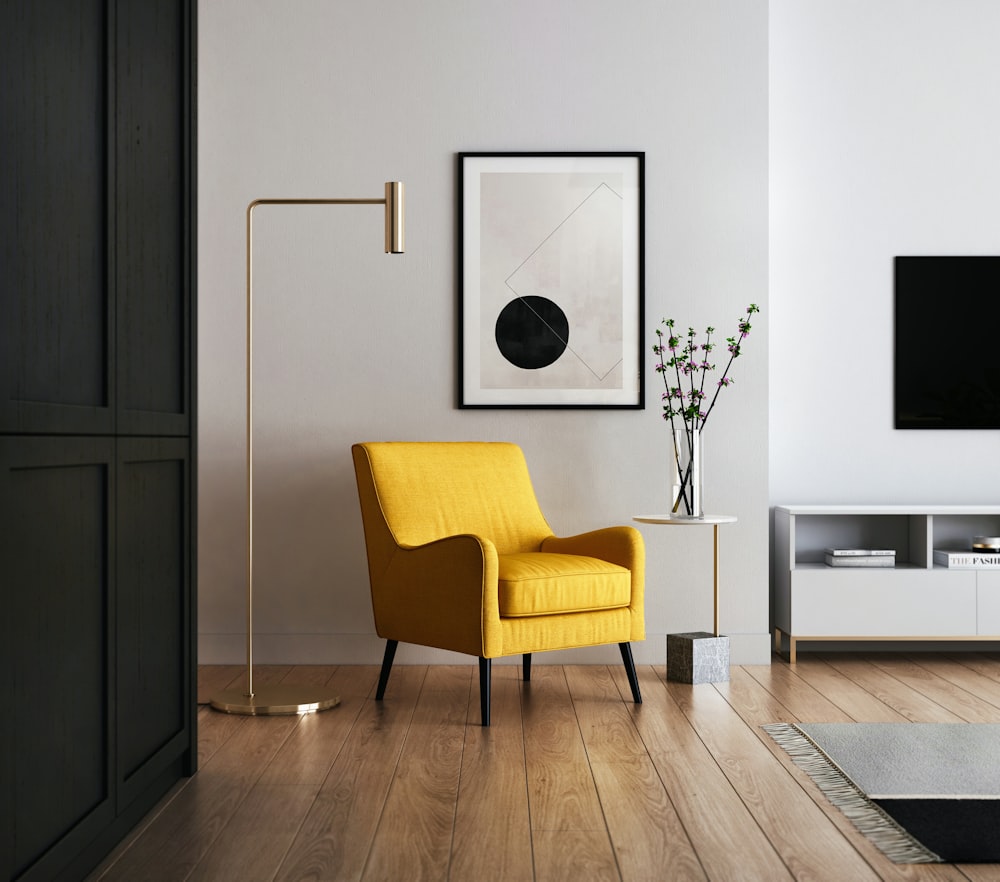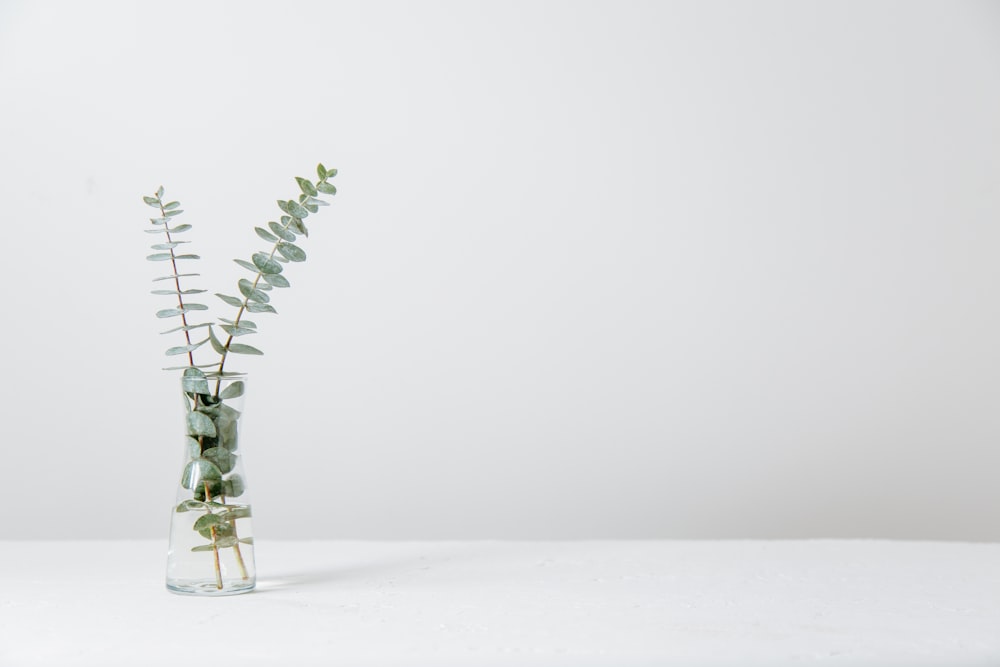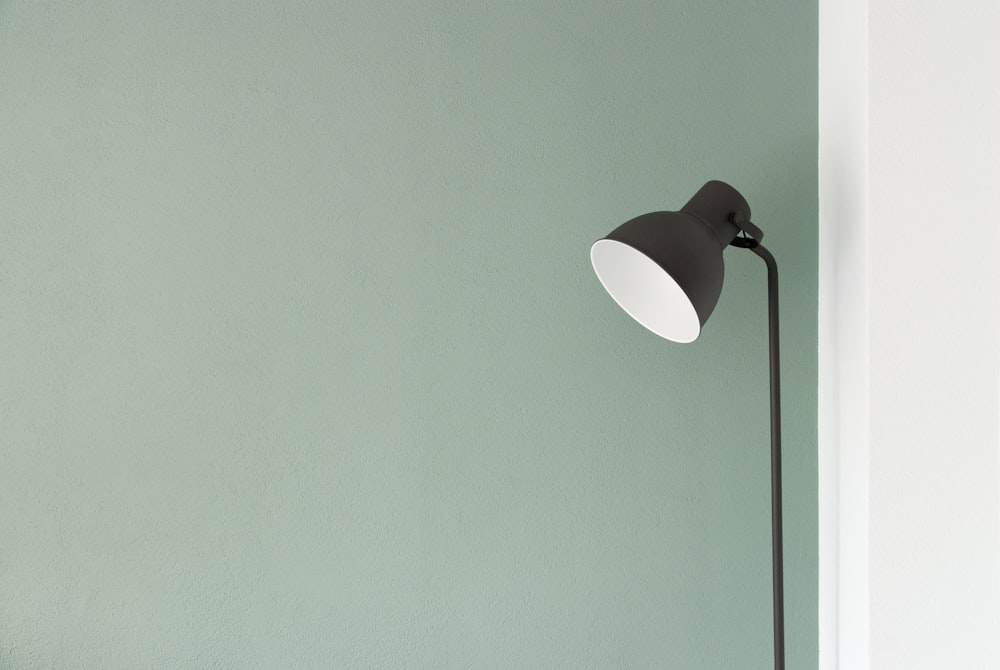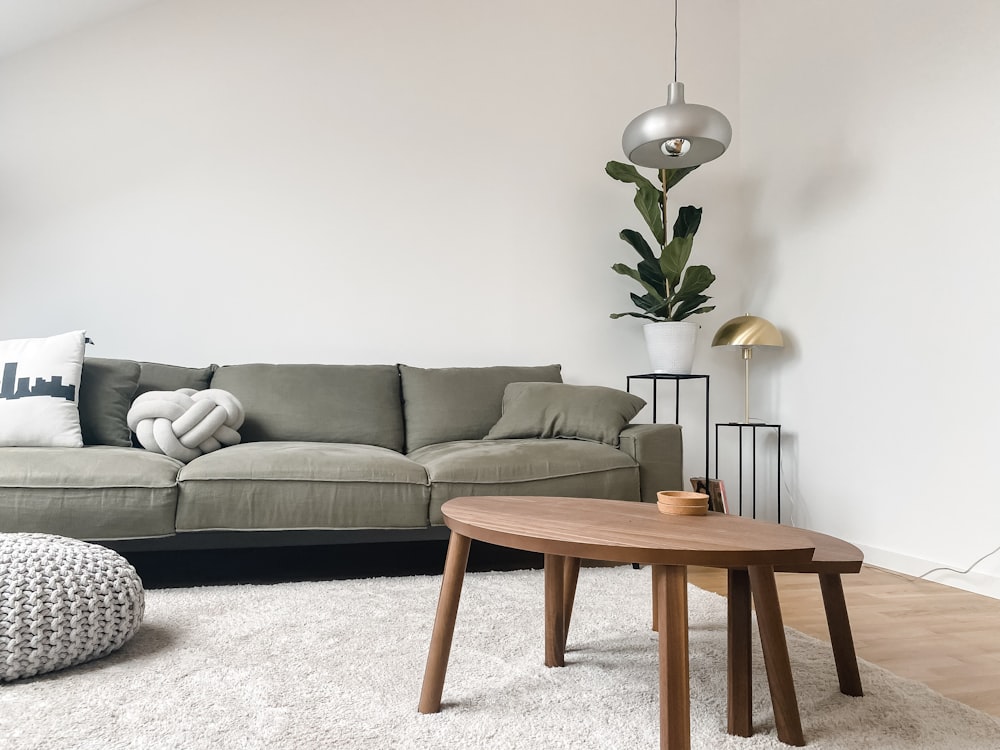minimalist design
Peaceful Paradise Authentic Japanese Backyard Ideas
Exploring Peaceful Paradise: Authentic Japanese Backyard Ideas
Embracing Japanese Aesthetics
In the realm of landscaping, few styles evoke the sense of serenity and tranquility quite like Japanese backyard design. Rooted in centuries-old traditions, authentic Japanese backyard ideas offer a harmonious blend of nature, spirituality, and minimalist beauty. Let’s take a journey into the world of Japanese-inspired landscapes and discover how to create your own peaceful paradise at home.
Principles of Japanese Garden Design
At the heart of Japanese backyard design are several core principles that guide the creation of serene outdoor spaces. These include simplicity, asymmetry, natural elements, and the concept of borrowed scenery. By embracing these principles, homeowners can create backyard retreats that feel both timeless and harmonious with the surrounding environment.
Zen Gardens: Tranquility in Miniature
One of the most iconic elements of Japanese backyard design is the Zen garden, also known as a dry landscape garden or karesansui. These minimalist gardens typically feature carefully raked gravel or sand to represent water, with strategically placed rocks and boulders symbolizing mountains or islands. Zen gardens are designed to evoke a sense of calm and contemplation, making them perfect for meditation or quiet reflection.
Water Features: Serenity in Motion
Water holds a special significance in Japanese culture and is often incorporated into backyard designs in the form of ponds, streams, or waterfalls. These water features not only add visual interest and movement to the landscape but also create a soothing soundtrack of trickling water. Koi ponds, in particular, are a popular choice in Japanese backyard design, adding a touch of color and life to the tranquil setting.
Bridges and Paths: Journeys Through Nature
Paths and bridges are essential elements of Japanese backyard design, guiding visitors on a journey through the landscape and inviting exploration. Curving pathways made from natural materials like gravel or stepping stones meander through the garden, leading to hidden alcoves, tea houses, or viewing platforms. Bridges, often arched or curved in design, symbolize the transition from the mundane to the sacred and add a sense of drama to the landscape.
Tea Houses and Gathering Spaces: Communing with Nature
In Japanese culture, tea houses are sacred spaces where guests gather to partake in the ancient ritual of tea ceremony, or chanoyu. These simple yet elegant structures are often nestled within the garden, providing a tranquil retreat for contemplation and conversation. Surrounding by lush greenery and the soothing sounds of nature, tea houses offer a peaceful oasis where visitors can connect with each other and with the natural world.
Plants and Trees: Symbolism in Nature
Plants and trees play a crucial role in Japanese backyard design, with each species carefully chosen for its symbolic meaning and aesthetic appeal. Evergreen trees like pine and cedar are prized for their longevity and resilience, while flowering trees like cherry blossoms and azaleas add bursts of color and fragrance to the landscape. Moss, ferns, and bamboo are also commonly used in Japanese gardens, contributing to the sense of tranquility and harmony.
Stone Lanterns
Sleek Stainless Steel Modern Handrail Designs for Your Home”
Exploring Sleek Stainless Steel: Modern Handrail Designs for Your Home
Embracing Modern Elegance
In the realm of interior design, the allure of sleek stainless steel handrail designs has become increasingly prominent. These modern marvels seamlessly blend form and function, adding a touch of contemporary elegance to any space. With their clean lines, minimalist aesthetic, and durability, stainless steel handrails have emerged as a popular choice for homeowners seeking a sophisticated and timeless design solution.
A Versatile Design Element
One of the key advantages of stainless steel handrails is their versatility. Whether your home boasts a sleek and minimalist aesthetic or leans towards a more industrial or urban style, stainless steel handrails can complement a wide range of design themes. Their understated elegance allows them to blend seamlessly into any setting, while still making a bold statement of modernity and sophistication.
Durability and Longevity
Beyond their aesthetic appeal, stainless steel handrails are prized for their durability and longevity. Made from high-quality stainless steel, these handrails are resistant to corrosion, rust, and tarnishing, making them an ideal choice for both indoor and outdoor applications. Whether installed along staircases, balconies, or terraces, stainless steel handrails offer a low-maintenance solution that will stand the test of time, even in harsh environmental conditions.
Sleek and Streamlined Design
One of the defining features of stainless steel handrails is their sleek and streamlined design. With their smooth surfaces and clean edges, these handrails exude a sense of modernity and sophistication, elevating the overall aesthetic of any space. Whether installed in a residential or commercial setting, stainless steel handrails add a touch of contemporary flair that instantly enhances the visual appeal of the environment.
Integration with Modern Architecture
Stainless steel handrails are perfectly suited to modern architectural styles, where clean lines and minimalist design elements reign supreme. Whether incorporated into a newly constructed home or added as part of a renovation project, stainless steel handrails seamlessly integrate with contemporary architecture, enhancing the overall aesthetic while providing essential safety and functionality.
Enhanced Safety and Security
Beyond their visual appeal, stainless steel handrails serve a practical purpose by enhancing safety and security within the home. Whether installed along staircases, balconies, or elevated walkways, these handrails provide stability and support, reducing the risk of slips, trips, and falls. With their sturdy construction and reliable performance, stainless steel handrails offer peace of mind for homeowners and their families.
Customization Options
While stainless steel handrails are prized for their sleek and minimalist design, they also offer ample opportunities for customization. From choosing the finish and texture to selecting the shape and profile, homeowners can tailor their handrails to suit their specific design preferences and aesthetic vision. Whether you prefer a brushed or polished finish, a round or square profile, stainless steel handrails can be customized to create a truly unique and personalized look for your home.
Seamless Integration with Other Materials
Stainless steel handrails can be seamlessly integrated with other materials to create a cohesive and harmonious design scheme. Whether paired with glass
Contemporary Chic Minimal Villa Interiors Redefined
Exploring Contemporary Chic: Minimal Villa Interiors Redefined
Embracing Modern Minimalism:
In the realm of interior design, contemporary chic minimal villa interiors are redefining luxury living. Gone are the days of excessive ornamentation and cluttered spaces. Instead, modern minimalism emphasizes clean lines, simplicity, and functionality, creating interiors that are both stylish and serene.
Sleek and Sophisticated Aesthetics:
Contemporary chic minimal villa interiors are characterized by their sleek and sophisticated aesthetics. From sleek furniture to minimalist decor, every element is carefully curated to create a sense of understated elegance. The use of neutral color palettes, such as whites, grays, and beiges, further enhances the modern appeal of these interiors.
Maximizing Space Efficiency:
One of the key principles of contemporary chic minimal villa interiors is maximizing space efficiency. Every square inch of the villa is thoughtfully utilized to create a sense of openness and flow. This often involves clever storage solutions, multifunctional furniture, and open floor plans that blur the boundaries between indoor and outdoor living spaces.
Incorporating Natural Elements:
While contemporary chic minimal villa interiors prioritize clean lines and simplicity, they also embrace the beauty of natural elements. From wood accents to stone finishes, these interiors incorporate organic materials to add warmth and texture to the space. This harmonious blend of modern minimalism and natural elements creates a sense of balance and harmony.
Striking a Balance Between Form and Function:
In contemporary chic minimal villa interiors, every design decision is guided by the principle of striking a balance between form and function. While aesthetics are important, functionality is equally prioritized. This results in interiors that not only look beautiful but also serve the needs of the residents, creating spaces that are as practical as they are stylish.
Creating Serene Retreats:
Contemporary chic minimal villa interiors are designed to be serene retreats from the hustle and bustle of everyday life. The minimalist aesthetic creates a sense of calm and tranquility, while the thoughtful design ensures that every corner of the villa feels inviting and comfortable. Whether it’s a cozy reading nook or a spacious living area, each space is designed to promote relaxation and rejuvenation.
Focusing on Quality Over Quantity:
In contemporary chic minimal villa interiors, the focus is on quality over quantity. Instead of filling the space with unnecessary clutter, every piece of furniture and decor is chosen for its craftsmanship, durability, and contribution to the overall aesthetic. This minimalist approach to decorating creates interiors that feel curated and intentional, rather than chaotic and overwhelming.
Embracing Minimalist Decor:
Minimalist decor plays a crucial role in contemporary chic minimal villa interiors. Clean lines, geometric shapes, and simple silhouettes dominate the decor, creating a sense of visual harmony and cohesion. From sleek lighting fixtures to minimalist artwork, every detail is carefully considered to enhance the modern minimalistic aesthetic of the villa.
Promoting Indoor-Outdoor Living:
Contemporary chic minimal villa interiors blur the boundaries between indoor and outdoor living spaces, promoting a seamless connection with nature. Floor-to-ceiling windows, sliding glass doors, and outdoor living areas create
Coastal Serenity Minimalist Beach Cottage Retreats”
Exploring the Tranquil Charm of Minimalist Beach Cottage Retreats
Embracing Coastal Living:
Nestled along the shores of picturesque beaches, minimalist beach cottage retreats offer a serene escape from the chaos of everyday life. These charming abodes blend seamlessly with their coastal surroundings, exuding a sense of tranquility and relaxation that is truly captivating. From sun-kissed sands to gentle ocean breezes, these retreats invite residents to embrace the laid-back lifestyle of coastal living.
Simplicity in Design:
Minimalist beach cottage retreats are characterized by their simplicity in design, emphasizing clean lines, open spaces, and uncluttered interiors. With a focus on functionality and practicality, these cottages maximize natural light and ventilation, creating bright and airy living spaces that feel both modern and inviting. Neutral color palettes and natural materials further enhance the sense of tranquility, allowing residents to unwind and recharge in a serene environment.
Connection to Nature:
One of the defining features of minimalist beach cottage retreats is their strong connection to nature. Large windows and sliding glass doors blur the boundaries between indoors and outdoors, offering breathtaking views of the surrounding landscape and allowing residents to feel immersed in the natural beauty of their surroundings. Whether lounging on a sun-drenched deck or enjoying a meal al fresco, residents can fully appreciate the sights and sounds of coastal living.
Cozy and Comfortable Living Spaces:
Despite their minimalist design, beach cottage retreats are surprisingly cozy and comfortable, offering all the amenities needed for a relaxing getaway. From plush furnishings to cozy bedding, every detail is carefully considered to ensure maximum comfort and enjoyment. Cozy reading nooks, crackling fireplaces, and inviting outdoor lounges provide ample opportunities for relaxation and rejuvenation, making it easy to unwind and escape the stresses of everyday life.
Efficient and Sustainable Living:
Many minimalist beach cottage retreats incorporate eco-friendly features and sustainable design principles to minimize their environmental footprint. From energy-efficient appliances to passive heating and cooling systems, these cottages are designed to reduce energy consumption and promote environmental sustainability. Rainwater harvesting systems, solar panels, and natural landscaping further enhance their eco-friendly credentials, allowing residents to enjoy a more sustainable way of living by the sea.
Embracing the Beach Lifestyle:
Living in a minimalist beach cottage retreat isn’t just about the physical space—it’s also about embracing the beach lifestyle and all it has to offer. Whether it’s surfing the waves, lounging on the sand, or exploring tide pools, residents have endless opportunities to connect with nature and enjoy outdoor activities. With miles of coastline to explore and countless adventures to be had, life in a beach cottage retreat is as vibrant and dynamic as the ocean itself.
Finding Peace and Serenity:
In a world that often feels chaotic and overwhelming, minimalist beach cottage retreats offer a peaceful oasis where residents can escape the noise and distractions of modern life and reconnect with themselves and nature. Surrounded by the beauty and tranquility of the beach, residents can find peace and serenity in every moment, allowing them to live more fully and
A Zen Oasis Minimalist Living Room Ideas for Apartments
Are you looking to transform your apartment living room into a serene Zen oasis? Dive into these minimalist ideas that promise to bring tranquility and style to your space.
Embracing Minimalist Principles
Let’s start by understanding what minimalist living room design is all about. It’s more than just a trend—it’s a lifestyle choice. Minimalism focuses on simplicity, functionality, and creating a sense of calm in your living space. Think clean lines, clutter-free surfaces, and a color palette that promotes relaxation.
Decluttering for Serenity
The first step to achieving a Zen oasis in your living room is decluttering. Minimalist design thrives on open spaces and minimal distractions. Take the time to go through your belongings and keep only the essentials. Invest in smart storage solutions like hidden cabinets or floating shelves to maintain the clean, uncluttered look.
Choosing a Calming Color Palette
Colors play a crucial role in setting the tone for a minimalist living room. Opt for calming hues such as soft neutrals like beige, off-white, or light grey. These colors create a soothing atmosphere and make the space feel open and airy. You can add touches of nature-inspired tones like sage green or warm earthy tones for a serene touch.
Furniture with Purpose
In a minimalist living room, every piece of furniture should serve a purpose. Choose sleek, simple designs with clean lines. A comfortable yet stylish sofa, a minimalist coffee table, and a couple of elegant chairs can create a cozy seating area without overwhelming the space. Consider multi-functional furniture like ottomans with hidden storage or nesting tables for added versatility.
Letting Light In
Natural light is a key element of minimalist design. It not only brightens up the space but also enhances the overall ambiance. Opt for sheer curtains or blinds that allow plenty of light to filter through. If your apartment has large windows, embrace them by keeping window treatments minimal or even going without curtains for an unobstructed view.
Minimalist Decor Accents
When it comes to decor, less is more in a minimalist living room. Select a few carefully curated pieces that reflect your style and bring a sense of calm. Consider incorporating elements of nature such as potted plants or a small indoor fountain for a touch of Zen. Geometric rugs, abstract art pieces, or a statement lamp can add visual interest without overwhelming the space.
Creating a Relaxation Corner
Designate a corner of your living room as a relaxation zone. This could be a cozy reading nook with a comfortable armchair, a soft throw blanket, and a small side table for your books and a cup of tea. Add a floor cushion or a meditation pillow for moments of quiet reflection or yoga practice.
Incorporating Natural Elements
Bringing nature indoors is a fundamental aspect of minimalist design. Consider adding a touch of greenery with easy-to-care-for houseplants like succulents, snake plants, or peace lilies. Not only do they purify the air, but they also add a sense of tranquility and life to your living
Simplicity Redefined Minimal Modern Home Decor Trends”
Exploring the Evolution of Minimal Modern Home Decor Trends
Unveiling the Essence of Minimalism
Minimalism has transcended from a mere design trend to a lifestyle philosophy, influencing the way we conceptualize and adorn our living spaces. At its core, minimal modern home decor trends emphasize simplicity, functionality, and aesthetic appeal. Let’s delve into the evolution of these trends and uncover the essence of minimalism in contemporary home decor.
Simplicity Redefined: The Foundation of Minimalism
Minimal modern home decor trends are anchored in simplicity, redefining the concept of adornment. Clean lines, uncluttered spaces, and a restrained color palette form the cornerstone of minimalist design. By eliminating excess and focusing on essential elements, minimalist decor cultivates a sense of calm and tranquility in the home.
Functionality as a Driving Force
Functionality is a driving force behind minimal modern home decor trends, shaping every aspect of design. Each piece of furniture, decor item, and architectural element is carefully selected for its utility and purpose. Through efficient space planning and innovative storage solutions, minimalist interiors optimize functionality without sacrificing style.
Embracing Neutral Tones: The Timeless Appeal
Neutral tones play a pivotal role in minimal modern home decor, offering a timeless appeal that transcends trends. Soft whites, muted grays, and earthy hues create a serene backdrop for the space, allowing key design elements to take center stage. These neutral tones evoke a sense of tranquility and harmony, enhancing the overall aesthetic of minimalist interiors.
Harmony with Nature: Incorporating Natural Elements
Minimal modern home decor trends often incorporate natural elements to establish a connection with the outdoors. From raw wood finishes and organic textiles to indoor plants and natural light, these elements infuse spaces with warmth and vitality. By bringing nature indoors, minimalist interiors promote a sense of well-being and connection to the environment.
Embracing Negative Space: The Power of Restraint
Negative space, also known as “white space,” is a fundamental aspect of minimal modern home decor. By strategically incorporating empty spaces into the design, minimalist interiors achieve balance and harmony. Embracing negative space allows key design elements to breathe and makes rooms feel more spacious and uncluttered.
Quality Over Quantity: Curating Thoughtful Pieces
Minimal modern home decor trends prioritize quality over quantity, encouraging homeowners to curate thoughtful pieces that stand the test of time. Each item is selected with intentionality and purpose, contributing to the overall aesthetic and functionality of the space. By investing in well-crafted, timeless pieces, minimalist interiors exude sophistication and refinement.
Maximizing Light and Airiness
Light and airiness are essential elements of minimal modern home decor, enhancing the sense of space and openness. Large windows, skylights, and strategically placed mirrors maximize natural light, making rooms feel brighter and more inviting. Additionally, minimalist interiors often feature an open floor plan, promoting airflow and circulation throughout the space.
Personalization Through Minimalist Expression
While minimalist design may appear austere to some, it offers ample opportunities for personalization and self-expression. Thoughtful accents, curated artwork, and unique decor items add personality and character to minimalist interiors. By
Timeless Elegance Minimal Traditional House Interiors
Exploring Timeless Elegance: Minimal Traditional House Interiors
Preserving Classic Charm:
In the realm of interior design, the concept of minimalism has transcended contemporary trends to blend seamlessly with traditional aesthetics. The marriage of minimalism with traditional house interiors creates a timeless elegance that exudes charm and sophistication.
Embracing Simplicity:
Minimal traditional house interiors prioritize simplicity above all else. Instead of overwhelming spaces with excessive ornamentation and intricate details, minimalism strips away the unnecessary, allowing key elements of traditional design, such as architectural features and quality craftsmanship, to shine through.
Clean Lines and Uncluttered Spaces:
Clean lines are a hallmark of minimalist design, and they play a pivotal role in traditional house interiors as well. By incorporating clean lines and maintaining uncluttered spaces, minimal traditional interiors achieve a sense of visual clarity and openness, enhancing the inherent beauty of traditional architectural elements.
Focus on Quality Materials:
In minimal traditional house interiors, the emphasis is placed on the use of high-quality materials that stand the test of time. From rich hardwoods to natural stone, traditional materials are celebrated for their durability and timeless appeal. By selecting materials with longevity in mind, minimal traditional interiors exude a sense of permanence and elegance.
Neutral Color Palettes:
Neutral color palettes are a cornerstone of both minimalism and traditional design, making them a natural fit for minimal traditional house interiors. Shades of white, beige, gray, and taupe create a serene backdrop that allows architectural details and furnishings to take center stage, evoking a sense of timeless elegance and sophistication.
Balancing Old and New:
Minimal traditional house interiors strike a delicate balance between old-world charm and modern sensibilities. While traditional design elements such as crown molding, wainscoting, and paneled doors pay homage to the past, contemporary furnishings and minimalist decor infuse the space with a fresh, updated feel.
Subtle Accents and Thoughtful Details:
Though minimal traditional interiors prioritize simplicity, they are not devoid of personality. Subtle accents and thoughtful details, such as carefully curated artwork, statement lighting fixtures, and unique textiles, add layers of interest and character to the space, creating a harmonious blend of old and new.
Creating Timeless Appeal:
By marrying the timeless elegance of traditional design with the clean lines and simplicity of minimalism, minimal traditional house interiors achieve a timeless appeal that transcends passing trends. These spaces exude a sense of warmth, comfort, and sophistication, inviting inhabitants and visitors alike to experience the beauty of understated elegance. Read more about minimal traditional house interior
Sleek Simplicity Minimalist Small House Design Ideas
Exploring Sleek Simplicity: Minimalist Small House Design Ideas
Embracing Minimalism in Small Spaces:
In today’s fast-paced world, the trend of minimalist living has gained immense popularity, especially in small houses. Embracing minimalism in small house design is not just about creating a visually appealing space; it’s about fostering a lifestyle focused on simplicity, functionality, and tranquility.
Maximizing Space Efficiency:
One of the key principles of minimalist small house design is maximizing space efficiency. Every square inch of the house is carefully considered and utilized to its fullest potential. This often involves clever storage solutions, such as built-in cabinets, multifunctional furniture, and hidden storage compartments, to keep clutter at bay and maintain a sense of openness.
Clean Lines and Simple Aesthetics:
Minimalist small house design is characterized by clean lines and simple aesthetics. Furniture and decor are chosen for their sleek, streamlined silhouettes, creating a sense of visual harmony and flow throughout the space. By minimizing ornamentation and keeping the design uncluttered, the focus is placed on the essential elements of the room, creating a serene and inviting atmosphere.
Neutral Color Palettes:
Neutral color palettes are a hallmark of minimalist small house design. Shades of white, beige, gray, and taupe dominate the color scheme, creating a sense of lightness and airiness in the space. These neutral hues serve as a versatile backdrop for pops of color or texture, allowing for easy customization and personalization of the interior decor.
Optimizing Natural Light:
In minimalist small house design, natural light is considered an essential element in creating a sense of spaciousness and connection with the outdoors. Large windows, skylights, and glass doors are often incorporated into the design to maximize natural light penetration and enhance the feeling of openness in the space. Additionally, strategically placed mirrors can help to reflect light and visually expand the room.
Functional Furniture Choices:
When it comes to furnishing a minimalist small house, functionality is key. Multi-functional furniture pieces, such as Murphy beds, extendable dining tables, and storage ottomans, are ideal for maximizing space efficiency and versatility. Additionally, opting for furniture with built-in storage solutions helps to minimize clutter and maintain a clean and organized environment.
Utilizing Vertical Space:
In small house design, utilizing vertical space is essential for maximizing storage and living areas. Floor-to-ceiling shelving units, wall-mounted cabinets, and lofted sleeping areas are effective ways to make the most of limited square footage. By taking advantage of vertical space, you can free up valuable floor space and create a more open and airy feel in the house.
Incorporating Natural Elements:
Bringing elements of nature into the interior design is a key aspect of minimalist small house design. Natural materials such as wood, stone, and bamboo add warmth and texture to the space, creating a cozy and inviting atmosphere. Additionally, indoor plants and greenery can help to purify the air and bring a sense of vitality and freshness to the interior.
Decluttering and Simplifying:
Central to minimalist small house design is the concept of decluttering and simplifying. By
Simplify Your Space Embracing Minimalist Apartment Living
Embracing Minimalist Apartment Living
In a world where excess seems to be the norm, there’s a refreshing trend taking hold—the minimalist lifestyle. Embracing minimalism isn’t just about decluttering; it’s a philosophy that encourages us to simplify our lives, starting right at home. If you’re living in an apartment, this philosophy can be particularly transformative, helping you create a space that feels open, peaceful, and uniquely yours.
Creating Space to Breathe
One of the core principles of minimalist apartment living is the idea of creating space to breathe. This doesn’t mean having vast empty rooms, but rather ensuring that each item in your space has a purpose and brings you joy. Start by decluttering—go through your belongings and ask yourself if each item serves a necessary function or holds significant sentimental value. If not, it might be time to let it go. You’ll be amazed at how much lighter you feel when you’re surrounded only by the things you truly love and need.
Furniture with Purpose
When it comes to furnishing your minimalist apartment, think quality over quantity. Choose furniture pieces that serve multiple functions, such as a coffee table with hidden storage or a sofa that converts into a guest bed. This not only saves space but also ensures that each piece is used to its fullest potential. Opt for clean lines and neutral colors to create a sense of calm and continuity throughout your space.
The Magic of Multipurpose Storage
Storage is key in any living space, but it’s especially important in a minimalist apartment. Get creative with your storage solutions—think floating shelves, under-bed drawers, and wall-mounted hooks. These not only help keep clutter at bay but also add visual interest to your space. Baskets and bins can be stylish additions that serve a functional purpose, hiding away items that aren’t in use.
Letting in Light and Air
Natural light and fresh air can work wonders in a minimalist apartment, making it feel larger and more inviting. Keep window treatments simple to maximize light, opting for sheer curtains or blinds that can be easily opened during the day. If you’re lucky enough to have a balcony or patio, consider adding some potted plants to bring a touch of nature indoors.
Mindful Decor Choices
In a minimalist apartment, each decor item should be thoughtfully chosen to enhance the space without overwhelming it. Opt for a few statement pieces, such as a bold piece of artwork or a unique sculpture, rather than filling every surface with knick-knacks. Plants can also breathe life into a space, adding a pop of color and freshness.
Embracing Minimalist Mindfulness
Beyond the physical aspects of minimalist apartment living, there’s a deeper mindfulness that comes with the lifestyle. Take time each day to appreciate the simplicity of your space, whether it’s enjoying a cup of tea in your clutter-free kitchen or practicing yoga in your uncluttered living room. Embracing minimalism isn’t just about the aesthetics—it’s about creating a peaceful, intentional environment that supports your well-being.
A Sanctuary
Minimalist Chic Interior Design Ideas for Modern Living
Minimalist Chic: Interior Design Ideas for Modern Living
In the world of interior design, minimalist chic has emerged as a timeless and elegant style that continues to captivate homeowners and designers alike. This design ethos emphasizes simplicity, clean lines, and a sense of calm, creating spaces that are both stylish and serene. Let’s explore some inspiring ideas to infuse your home with minimalist chic.
Embracing Simplicity in Design
At the core of minimalist chic is the idea of embracing simplicity in design. This means stripping away the unnecessary and focusing on the essentials. Opt for furniture pieces with clean lines and minimalistic silhouettes. A sleek sofa in a neutral color palette, paired with a simple coffee table and unadorned shelving units, creates a foundation of understated elegance.
Neutral Color Palettes for Serene Spaces
When it comes to color schemes in minimalist chic interiors, neutral tones reign supreme. Think whites, creams, grays, and soft beiges to create a serene and calming atmosphere. These hues not only visually expand the space but also allow other design elements, such as textures and shapes, to take center stage. Consider adding warmth with natural wood accents or subtle pops of color with carefully selected decor pieces.
Functional Minimalism for Everyday Living
Minimalist chic isn’t just about aesthetics—it’s also about functionality. Choose furniture pieces that serve dual purposes, such as a storage ottoman or a coffee table with built-in drawers. This approach ensures that every item in your home serves a practical function while maintaining the sleek and clutter-free look that defines minimalist chic.
Decluttering Your Space for Peace of Mind
A key aspect of minimalist chic is the emphasis on decluttering and organization. Take a cue from the KonMari method and only keep items that spark joy or serve a specific purpose. Invest in smart storage solutions like hidden cabinets, floating shelves, or modular furniture to keep your space tidy and uncluttered. A clutter-free environment not only looks visually appealing but also promotes a sense of peace and tranquility.
Letting Natural Light Shine
Maximizing natural light is essential in minimalist chic interiors. Large windows, sheer curtains, and strategically placed mirrors can help bounce natural light throughout the space, creating an airy and open feel. This not only enhances the overall aesthetic but also promotes a sense of well-being and connection to the outdoors.
Texture Play for Visual Interest
While minimalist chic interiors often feature a subdued color palette, texture plays a crucial role in adding depth and visual interest. Incorporate different textures such as plush rugs, cozy throws, and tactile fabrics like linen or wool. These elements create layers of richness and warmth, elevating the minimalist aesthetic to new heights.
Artful Arrangements of Decor Pieces
In minimalist chic design, less is often more when it comes to decor. Opt for a few carefully curated pieces that reflect your personal style and add a sense of personality to the space. A striking piece of modern art, a sculptural vase, or a statement-making light fixture can become
Minimalist Inspiration Creative Wall Art Concepts”
Exploring Minimalist Inspiration: Creative Wall Art Concepts
Embracing Simplicity in Design:
In the world of interior decor, minimalist inspiration has taken center stage, reshaping the way we think about wall art. This design ethos emphasizes simplicity, clean lines, and uncluttered spaces, offering a breath of fresh air in our increasingly hectic lives.
A Canvas for Creativity:
Creative wall art concepts provide a canvas for self-expression and personal style. From minimalist prints to abstract paintings, each piece serves as a focal point, adding visual interest and depth to the room. Whether it’s a bold statement piece or a subtle accent, wall art has the power to transform any space.
Minimalist Prints:
Minimalist prints are a popular choice for those seeking to add a touch of elegance to their walls. These prints often feature simple geometric shapes, monochromatic color palettes, and clean lines, creating a sense of harmony and balance in the room. Whether it’s a minimalist landscape or an abstract composition, these prints add a contemporary flair to any space.
Abstract Art:
Abstract art is another creative wall art concept that continues to captivate audiences with its expressive forms and vibrant colors. In minimalist design, abstract art serves as a focal point, drawing the eye and sparking conversation. With its emphasis on form and color, abstract art adds visual interest and personality to the room.
Typography Art:
Typography art is a unique and versatile option for those looking to make a statement with their wall decor. Whether it’s a motivational quote, a playful slogan, or a personalized message, typography art adds a touch of personality and charm to any space. With its clean lines and minimalist aesthetic, typography art seamlessly integrates into modern interiors.
Nature-Inspired Art:
Nature-inspired art brings the beauty of the outdoors into our homes, creating a sense of tranquility and serenity. From botanical prints to landscape paintings, nature-inspired art adds a touch of freshness and vitality to the room. With its organic forms and earthy hues, nature-inspired art complements minimalist interiors beautifully.
Photography Prints:
Photography prints offer a window into the world, capturing moments in time with stunning clarity and detail. In minimalist design, photography prints serve as a visual focal point, adding depth and dimension to the room. Whether it’s a black and white portrait or a vibrant landscape, photography prints add a sense of sophistication and refinement to any space.
Mixed Media Art:
Mixed media art combines various materials and techniques to create visually dynamic and textured pieces. From collage to assemblage, mixed media art adds depth and dimension to the room, inviting viewers to explore and engage with the artwork. With its tactile quality and eclectic charm, mixed media art adds a sense of intrigue and creativity to minimalist interiors.
Interactive Art Installations:
Interactive art installations invite viewers to become active participants in the artistic experience. From kinetic sculptures to interactive projections, these installations blur the line between art and viewer, creating immersive and engaging environments. With its innovative approach to art, interactive installations add
Minimal Mid Century Modern Timeless Elegance for Today
Embracing Minimal Mid Century Modern Design
Reviving Timeless Elegance
In the realm of interior design, the resurgence of minimal mid-century modern aesthetic has garnered significant attention. This design ethos, rooted in the mid-20th century, seamlessly blends clean lines, organic forms, and functional simplicity. Today, minimal mid-century modern design continues to captivate homeowners and designers alike, offering a timeless elegance that transcends trends.
Honoring Classic Principles
At the core of minimal mid-century modern design are the classic principles of simplicity and functionality. Drawing inspiration from the mid-century era, this design style prioritizes clean lines, uncluttered spaces, and ergonomic furnishings. By honoring these timeless principles, minimal mid-century modern design creates spaces that feel both stylish and effortlessly functional.
Sleek Simplicity in Form and Function
Minimal mid-century modern design celebrates sleek simplicity in both form and function. Furniture pieces boast clean lines, gentle curves, and geometric shapes, reflecting the era’s fascination with modernism. Every element serves a purpose, from iconic lounge chairs to modular storage solutions, contributing to a harmonious balance of aesthetics and utility.
A Palette of Neutral Tones
The color palette of minimal mid-century modern design tends to favor neutral tones, such as white, beige, gray, and earthy hues. These subdued colors serve as the perfect backdrop for showcasing the beauty of natural materials, such as wood, leather, and metal. By embracing a minimalist color scheme, minimal mid-century modern spaces exude a sense of serenity and sophistication.
Embracing Natural Materials
Natural materials play a central role in minimal mid-century modern design, adding warmth, texture, and visual interest to the space. From sleek walnut veneers to rich leather upholstery, these materials bring an organic element to the minimalist aesthetic. By incorporating natural materials, minimal mid-century modern design creates a connection to the outdoors, fostering a sense of harmony and tranquility.
Open Floor Plans and Seamless Flow
Minimal mid-century modern design often features open floor plans and seamless flow between indoor and outdoor spaces. Large windows and sliding glass doors invite natural light into the home, blurring the boundaries between interior and exterior. This sense of openness creates a feeling of expansiveness and freedom, enhancing the overall sense of well-being.
Iconic Design Pieces and Timeless Classics
No discussion of minimal mid-century modern design would be complete without mentioning the iconic design pieces and timeless classics that define the era. From the Eames Lounge Chair to the Barcelona Daybed, these iconic furnishings continue to inspire and influence contemporary design. By incorporating these design classics into their spaces, homeowners can infuse their interiors with a sense of history and heritage.
Minimalist Accessories and Thoughtful Details
In minimal mid-century modern design, less is often more when it comes to accessories and decorative accents. Thoughtfully curated art pieces, sculptural lighting fixtures, and minimalist decor add personality and character to the space without overwhelming the senses. By focusing on quality over quantity, minimal mid-century modern design creates a sense of calm and tranquility.
Embracing Minimal Mid Century Modern in Your Home
In conclusion, minimal mid-century modern design offers
“Sleek Sophistication Minimal Modern Farmhouse Living”
Embracing Sleek Sophistication in Modern Farmhouse Living
Rediscovering Rural Elegance
In the heart of the countryside, a new wave of design is reshaping the landscape of modern farmhouse living. With a focus on sleek sophistication, minimal modern farmhouse living offers a refreshing take on rural elegance. Let’s explore how this design ethos combines contemporary style with timeless charm.
Blending Modernity with Tradition
Minimal modern farmhouse living seamlessly blends modernity with tradition, creating spaces that are both stylish and inviting. While traditional farmhouse elements like exposed wooden beams and rustic accents pay homage to the past, sleek finishes and minimalist furnishings add a touch of contemporary flair. This harmonious blend of old and new creates a unique aesthetic that feels both familiar and fresh.
Streamlined Interiors with Clean Lines
At the heart of minimal modern farmhouse living are streamlined interiors characterized by clean lines and uncluttered spaces. Furniture pieces boast simple silhouettes and minimalist designs, creating a sense of openness and fluidity. By embracing clean lines and minimal ornamentation, these interiors exude a sense of sophistication and refinement.
Neutral Color Palette for Timeless Appeal
A neutral color palette forms the foundation of minimal modern farmhouse living, offering a timeless appeal that never goes out of style. Soft whites, warm beiges, and muted grays create a serene backdrop for the space, allowing key design elements to shine. These neutral tones also enhance the sense of openness and tranquility, making the space feel welcoming and inviting.
Embracing Natural Materials and Textures
Natural materials play a central role in minimal modern farmhouse living, adding warmth, texture, and character to the space. From reclaimed wood and exposed brick to natural stone and metal accents, these materials bring a sense of authenticity and depth to the design. By incorporating natural textures, minimal modern farmhouse living celebrates the beauty of the surrounding landscape.
Open Floor Plans for Seamless Flow
Open floor plans are a hallmark of minimal modern farmhouse living, allowing for a seamless flow between different areas of the home. This design feature not only maximizes natural light and ventilation but also promotes connectivity and interaction among family members. Whether it’s the kitchen flowing into the dining area or the living room extending onto a covered porch, open floor plans create spaces that are both functional and inviting.
Functional Spaces with a Focus on Comfort
In minimal modern farmhouse living, every space is designed with functionality and comfort in mind. From cozy reading nooks and window seats to spacious kitchens and dining areas, each area of the home is thoughtfully curated to enhance the overall living experience. Comfortable furnishings, plush textiles, and layered lighting add to the sense of warmth and hospitality, creating spaces that are perfect for relaxing and unwinding.
Balancing Minimalism with Coziness
Minimal modern farmhouse living strikes the perfect balance between minimalism and coziness, creating spaces that are both sleek and inviting. While the design ethos emphasizes simplicity and restraint, it also prioritizes comfort and warmth. Layered textiles, soft lighting, and carefully curated
Contemporary Tiny Living Minimalist Home Inspiration
Exploring Contemporary Tiny Living: Minimalist Home Inspiration
Embracing the Tiny Living Movement:
In recent years, the tiny living movement has gained significant traction as more people seek to simplify their lives and reduce their environmental footprint. Embracing the philosophy of “less is more,” tiny living advocates for living in smaller, more efficient spaces that prioritize quality over quantity.
The Appeal of Minimalist Home Design:
At the heart of contemporary tiny living is minimalist home design. Minimalism emphasizes clean lines, simplicity, and functionality, creating spaces that are both aesthetically pleasing and highly efficient. Minimalist homes are free from clutter and excess, allowing residents to focus on what truly matters and live more intentionally.
Maximizing Space Efficiency:
One of the key principles of minimalist home design in tiny living is maximizing space efficiency. Every square inch of the home is carefully considered and utilized to its fullest potential. This often involves creative storage solutions, multifunctional furniture, and innovative design techniques to make the most of limited space.
Sleek and Streamlined Aesthetics:
Contemporary tiny living spaces are characterized by sleek and streamlined aesthetics. Furniture and decor are chosen for their clean lines and minimalist silhouettes, creating a sense of visual harmony and cohesion throughout the home. By keeping the design simple and uncluttered, tiny living spaces feel open, airy, and inviting.
Natural Light and Openness:
In minimalist tiny homes, natural light plays a crucial role in creating a sense of openness and spaciousness. Large windows, skylights, and glass doors are often incorporated into the design to maximize natural light penetration and blur the boundaries between indoor and outdoor spaces. This not only enhances the aesthetic appeal of the home but also promotes a greater sense of connection with nature.
Neutral Color Palettes:
Neutral color palettes are commonly used in minimalist tiny homes to create a sense of calm and tranquility. Shades of white, beige, gray, and taupe dominate the color scheme, providing a versatile backdrop for pops of color or texture. Neutral colors also help to visually expand the space, making it feel larger and more expansive than it actually is.
Functional and Versatile Furniture:
In tiny living, every piece of furniture must serve a purpose and maximize space efficiency. Functional and versatile furniture pieces, such as Murphy beds, fold-out tables, and storage ottomans, are ideal for optimizing space in minimalist homes. These multifunctional pieces help to create a more flexible and adaptable living environment, allowing residents to make the most of their limited space.
Minimalist Decor and Accessories:
When it comes to decor, less is often more in minimalist tiny homes. Decor and accessories are chosen thoughtfully and sparingly, with an emphasis on quality over quantity. Simple, understated pieces add personality and warmth to the space without overwhelming it with clutter. By keeping decor minimal, tiny living spaces feel calm, balanced, and inviting.
Embracing Sustainable Living Practices:
In addition to minimalist design principles, contemporary tiny living also embraces sustainable living practices. From energy-efficient appliances to eco-friendly building materials, tiny homes are designed
Serene Simplicity Minimal White House Interior Design
Exploring Serene Simplicity: Minimal White House Interior Design
Embracing Tranquility:
In the realm of interior design, the concept of minimalism has gained prominence for its ability to create serene and calming spaces. Minimalist white house interior design takes this notion a step further by incorporating a predominantly white color palette, evoking a sense of tranquility and simplicity.
The Allure of White:
White is a versatile and timeless color choice that holds immense appeal in minimalist interior design. It serves as a blank canvas, allowing other elements in the space to shine while creating an illusion of spaciousness and light. In a white house interior, every corner feels airy and open, contributing to a sense of calm and serenity.
Clean Lines and Simple Forms:
Minimalist white house interior design is characterized by clean lines and simple forms. Furniture pieces are often sleek and streamlined, with minimal embellishments or ornamentation. This emphasis on simplicity allows each element to stand out on its own while contributing to the overall harmony of the space.
Maximizing Natural Light:
Natural light plays a crucial role in minimalist white house interior design, as it helps enhance the brightness and clarity of the space. Large windows, glass doors, and strategically placed skylights are common features in such homes, allowing ample sunlight to filter in throughout the day. The abundance of natural light further enhances the serene ambiance of the space.
Creating Visual Interest:
While minimalist white house interior design may seem simple at first glance, it is far from dull or boring. Texture, contrast, and subtle accents are used to create visual interest and depth in the space. Textured fabrics, natural materials like wood or stone, and carefully selected decor pieces add warmth and character to the predominantly white palette.
Functional Spaces:
In minimalist white house interior design, every space is carefully considered for its functionality and purpose. Clutter is kept to a minimum, and each item serves a specific function or contributes to the overall aesthetic of the space. This focus on functionality ensures that the home not only looks beautiful but also serves the needs of its inhabitants efficiently.
The Power of Simplicity:
At its core, minimalist white house interior design celebrates the power of simplicity. It encourages a decluttered and organized approach to living, free from unnecessary distractions or excess. By stripping away the non-essential, minimalist white house interiors create a peaceful and harmonious environment where one can truly relax and unwind.
Harmonizing Elements:
In a minimalist white house interior, every element is carefully chosen to harmonize with the overall aesthetic of the space. From furniture and decor to lighting and accessories, each piece is selected for its ability to contribute to the sense of serenity and simplicity. This cohesive approach to design ensures that every aspect of the home feels cohesive and well-balanced.
Personalized Touches:
While minimalist white house interior design favors simplicity, it also leaves room for personalization and individual expression. Whether it’s through artwork, textiles, or decorative accents, homeowners can infuse their
Minimalist Fall Décor Simple Elegance for Your Home
Exploring Minimalist Fall Décor: Elevating Your Home with Simple Elegance
Embracing the Essence of Fall:
As the crisp air and changing leaves signal the arrival of autumn, it’s time to infuse your home with the warmth and coziness of the season. Minimalist fall décor offers a refreshing approach to seasonal styling, emphasizing simplicity, elegance, and understated beauty. By incorporating subtle touches of fall-inspired elements into your home, you can create a serene and inviting space that celebrates the essence of the season without overwhelming the senses.
Simplicity is Key:
At the heart of minimalist fall décor lies the principle of simplicity. Rather than inundating your home with an abundance of seasonal accents and decorations, focus on selecting a few key pieces that embody the spirit of fall. Opt for clean lines, neutral colors, and uncluttered spaces to create a sense of calm and tranquility throughout your home. By keeping décor minimal, you allow each element to shine and make a statement on its own.
Natural Elements and Textures:
Incorporating natural elements and textures is essential to creating a cozy and inviting atmosphere in your home during the fall months. Consider adding touches of warmth and texture with materials such as wood, wool, and linen. Incorporate elements from nature, such as pinecones, acorns, and branches, to bring the beauty of the outdoors inside. These natural accents add visual interest and depth to your space while creating a sense of connection to the season.
Warm and Inviting Color Palette:
When it comes to color palette, think warm and inviting hues that reflect the colors of fall. Earthy tones such as taupe, olive green, and burnt orange create a sense of coziness and warmth, while muted shades of brown and beige provide a neutral backdrop for your minimalist décor. Consider adding pops of color with accents such as throw pillows, blankets, and artwork to add visual interest and dimension to your space.
Subtle Seasonal Accents:
Minimalist fall décor is all about incorporating subtle seasonal accents that complement your existing décor without overpowering it. Choose a few key pieces that evoke the spirit of fall, such as a simple wreath for your front door, a cozy throw blanket draped over the sofa, or a minimalist centerpiece for your dining table. These understated accents add a touch of warmth and charm to your space without overwhelming it with clutter.
Focus on Functionality:
In addition to aesthetics, prioritize functionality when decorating your home for fall. Choose décor pieces that serve a dual purpose, such as storage baskets that can hold blankets or firewood, or multipurpose furniture that maximizes space in small rooms. By combining form and function, you can create a space that is both beautiful and practical, allowing you to fully enjoy the comforts of fall in your home.
Creating Cozy Spaces:
As the temperatures drop and the days grow shorter, creating cozy spaces in your home becomes essential for embracing the season. Arrange furniture in intimate groupings to encourage conversation and connection, and add
Tranquil Haven Creating a Minimal Family Home Retreat
Nestled amidst the chaos of everyday life, a minimal family home offers a serene retreat—a haven of tranquility and simplicity. Let’s explore the art of creating a tranquil haven for your family, where minimalist design principles meet the warmth of family living.
Embracing Minimalism
In the heart of a minimal family home lies the philosophy of “less is more.” It’s not just about decluttering your space; it’s a way of life that celebrates simplicity, functionality, and the beauty of essentials. By stripping away the excess, we create room for clarity, calmness, and togetherness.
Designing for Serenity
The essence of a minimal family home is tranquility. Start by choosing a soothing color palette—soft neutrals, gentle blues, or earthy tones can create a serene atmosphere. Opt for furniture with clean lines and multifunctional pieces to maximize space and functionality.
Creating Functional Spaces
Every corner of a minimal family home is designed with purpose. From the cozy reading nook to the spacious dining area, each space serves a specific function while maintaining a cohesive design. Consider storage solutions that blend seamlessly into the decor, keeping clutter at bay.
Openness and Airiness
Minimalist design often emphasizes open spaces and natural light. Large windows invite the outdoors in, bathing the rooms in natural light and creating a sense of airiness. This openness fosters a connection with nature and a feeling of freedom within the home.
Warmth in Minimalism
Contrary to popular belief, minimalism doesn’t mean sterile or cold. In a minimal family home, warmth is infused through carefully selected textures and materials. Soft throws, plush rugs, and tactile fabrics add coziness and comfort to the space.
Family-Friendly Minimalism
Designing a minimal family home doesn’t mean sacrificing functionality or durability. Opt for furniture and decor that can withstand the rigors of daily life—stain-resistant fabrics, sturdy materials, and easy-to-clean surfaces. Create designated play areas for children, blending seamlessly with the overall design.
Personal Touches
While minimalism celebrates simplicity, it also leaves room for personal touches and sentimental items. Display family photographs in sleek frames, showcase treasured artworks, or incorporate heirloom pieces that tell your family’s story. These personal touches add warmth and character to the space.
Mindful Decor Choices
In a minimal family home, every decor item is chosen with intention. Instead of filling shelves with trinkets, opt for a few carefully curated pieces that hold meaning. Plants can also bring life and freshness into the home, adding a touch of nature to the minimalist aesthetic.
Creating Zones for Connection
A minimal family home is designed to facilitate connection and togetherness. Create cozy nooks for reading or relaxing, a central gathering space for family meals, and a dedicated workspace for productivity. Each zone serves a purpose while contributing to the overall harmony of the home.
Sustainability and Minimal Living
Minimalist principles often align with sustainable living. Consider eco-friendly materials, energy-efficient appliances, and practices that reduce waste. This not only benefits the environment but also fosters a sense of responsibility and mindfulness within the family.
In Conclusion
In
Tranquil Retreat Minimalist Farmhouse Design Inspirations
Embracing Minimalist Farmhouse Design
In the heart of countryside living lies the charm of minimalist farmhouse design. This unique approach combines the rustic allure of a farmhouse with the simplicity and elegance of minimalism. Let’s explore how to create a tranquil retreat filled with minimalist farmhouse design inspirations.
Simplicity in Rustic Charm
Minimalist farmhouse design is all about embracing the rustic charm of a farmhouse while keeping the aesthetic clean and uncluttered. Think exposed beams, reclaimed wood, and natural textures paired with sleek lines and a neutral color palette. This blend creates a serene and inviting atmosphere that celebrates the essence of farmhouse living.
Neutral Color Palette
A key element of minimalist farmhouse design is the use of a neutral color palette. Shades of white, cream, beige, and soft greys dominate the space, allowing the natural materials and textures to take center stage. These colors evoke a sense of calmness and tranquility, perfect for creating a peaceful retreat.
Clean Lines and Simple Silhouettes
Incorporating clean lines and simple silhouettes is essential in minimalist farmhouse design. Furniture pieces are often streamlined and functional, with a focus on quality craftsmanship. This approach creates a sense of openness and spaciousness, even in smaller farmhouse spaces.
Natural Materials and Textures
Natural materials such as wood, stone, and metal play a significant role in minimalist farmhouse design. From reclaimed barn wood flooring to stone countertops and metal fixtures, these elements add warmth and texture to the space. They also bring a sense of authenticity and connection to nature, which is characteristic of farmhouse living.
Cozy Textiles and Soft Furnishings
To enhance the comfort and coziness of a minimalist farmhouse, incorporate soft textiles and furnishings. Think plush throw blankets, linen upholstery, and oversized cushions in earthy tones. These elements not only add warmth to the space but also create inviting nooks for relaxation.
Embracing Minimalist Decor Accents
When it comes to decor accents in a minimalist farmhouse, less is more. Choose a few carefully curated pieces that reflect the farmhouse aesthetic, such as vintage signs, rustic pottery, or antique farmhouse tables. These accents add character and charm without overwhelming the space.
Maximizing Natural Light
Natural light is a crucial element in minimalist farmhouse design. Large windows, skylights, and French doors allow ample natural light to flood the space, creating a bright and airy atmosphere. This not only highlights the beauty of the farmhouse elements but also promotes a sense of well-being.
Creating Functional Farmhouse Spaces
In a minimalist farmhouse, each space serves a purpose while maintaining a sense of simplicity. The kitchen becomes a hub of activity with open shelving, farmhouse sinks, and functional island counters. Bedrooms offer serene retreats with minimalist furnishings and cozy bedding. Living areas feature comfortable seating arrangements and rustic accents for gatherings.
Blending Indoor and Outdoor Living
One of the joys of farmhouse living is the connection to the outdoors. In a minimalist farmhouse design, this connection is enhanced with seamless transitions between indoor and outdoor spaces. Consider adding a screened
Simplifying Spaces Minimal Modern Home Design Trends
Redefining Modern Home Design Trends
Exploring the Essence of Minimalism
In the ever-evolving realm of home design, minimalism has emerged as a prevailing trend, reshaping the way we envision living spaces. Minimal modern home design trends encapsulate the essence of simplicity, functionality, and aesthetic appeal. Let’s delve into the nuances of this design philosophy and how it’s simplifying spaces for contemporary living.
Sleek Simplicity in Design
At the core of minimal modern home design trends lies sleek simplicity. Clean lines, uncluttered spaces, and minimal ornamentation define this aesthetic, creating interiors that feel both spacious and serene. By stripping away excess and focusing on essentials, minimalist design fosters a sense of calm and clarity in the home.
Embracing Functional Minimalism
Minimal modern home design trends prioritize functionality without compromising on style. Every element of the design serves a purpose, from multi-functional furniture pieces to clever storage solutions. By maximizing efficiency and minimizing clutter, minimalist interiors promote a sense of ease and comfort in everyday living.
Neutral Color Palettes for Timeless Appeal
Neutral color palettes are a hallmark of minimal modern home design, offering a timeless appeal that transcends trends. Soft whites, muted grays, and earthy tones create a harmonious backdrop for the space, allowing key design elements to stand out. These neutral hues also enhance natural light and make rooms feel more spacious and inviting.
Incorporating Natural Materials
Natural materials play a pivotal role in minimal modern home design, adding warmth, texture, and visual interest to the space. From wood and stone to metal and glass, these materials bring a sense of authenticity and connection to the natural world. By incorporating natural elements, minimalist interiors feel grounded and inviting.
Open Concept Living for Airy Ambiance
Open concept living is a defining feature of minimal modern home design, promoting a sense of connectivity and flow throughout the space. Removing walls and barriers allows for seamless movement between different areas of the home, enhancing social interaction and creating an airy ambiance. Open layouts also maximize natural light and views, making the space feel larger and more expansive.
Minimalist Furnishings for Understated Elegance
Minimalist furnishings are key to achieving the understated elegance of minimal modern home design. Simple yet sophisticated, these furnishings boast clean lines, geometric shapes, and streamlined silhouettes. By choosing pieces that prioritize form and function, minimalist interiors exude a sense of refinement and sophistication.
Decluttering for Peace of Mind
Decluttering is a fundamental aspect of minimal modern home design, helping to create spaces that feel calm and organized. By purging unnecessary items and embracing a less-is-more approach, homeowners can streamline their surroundings and cultivate a sense of peace and tranquility. Minimalist interiors promote mindful living and encourage residents to focus on what truly matters.
Personalizing with Thoughtful Details
While minimal modern home design trends emphasize simplicity, they also leave room for personalization and self-expression. Thoughtful details such as curated art pieces, statement lighting fixtures, and textured textiles add personality and character to the space. By incorporating meaningful touches, minimalist interiors feel






